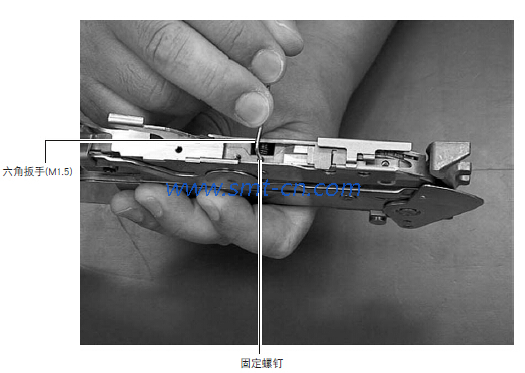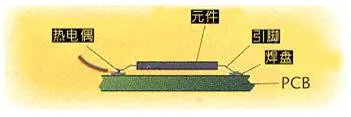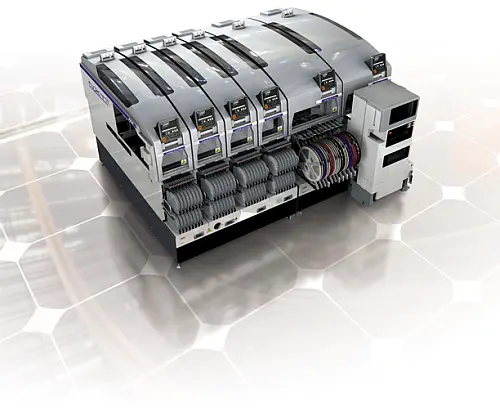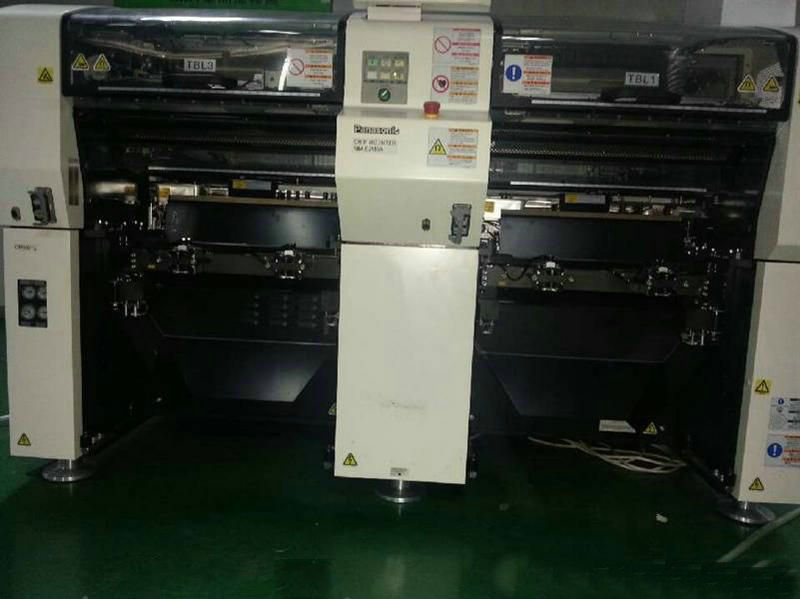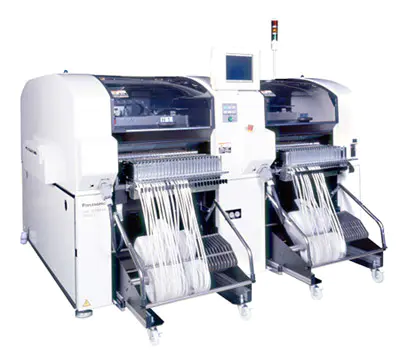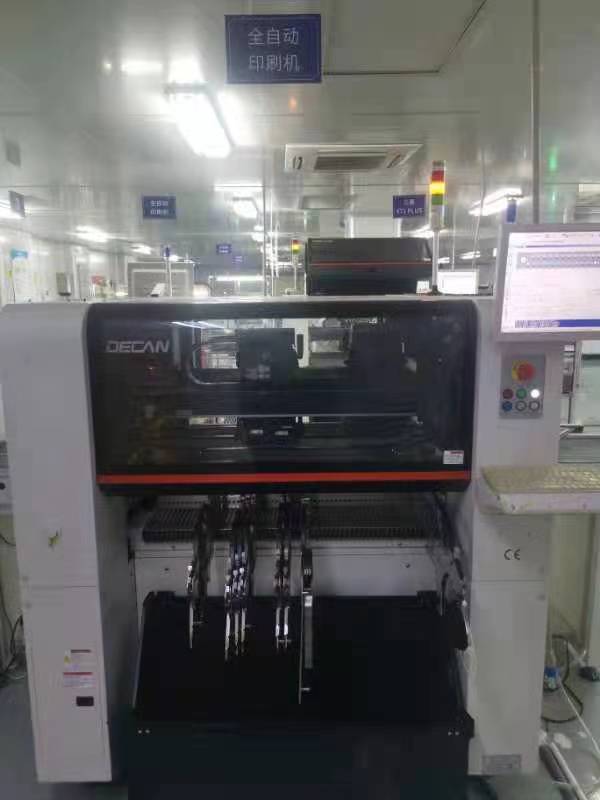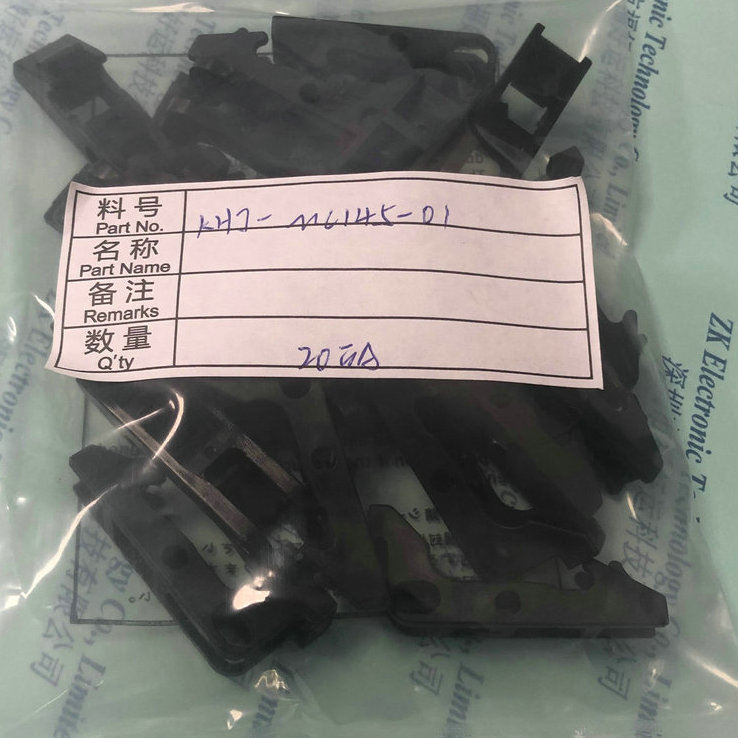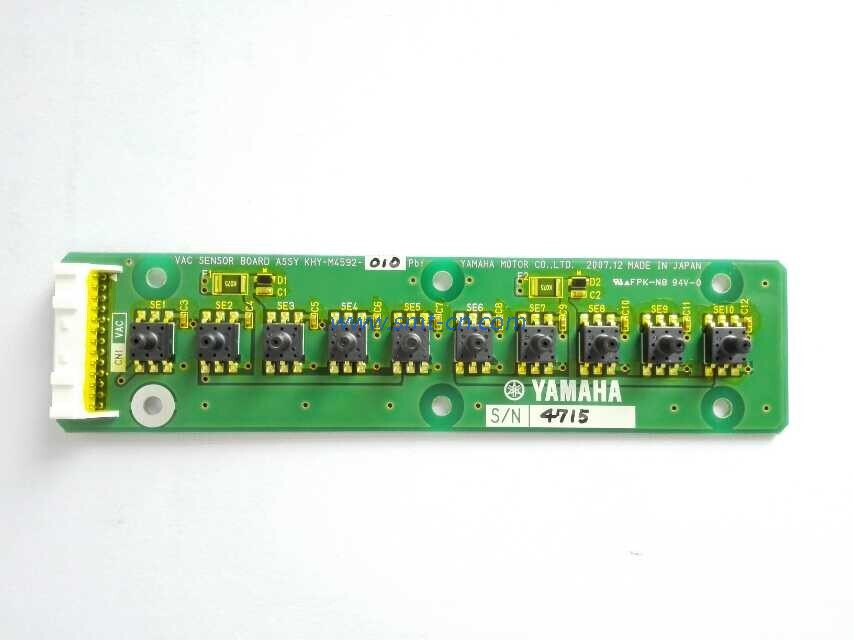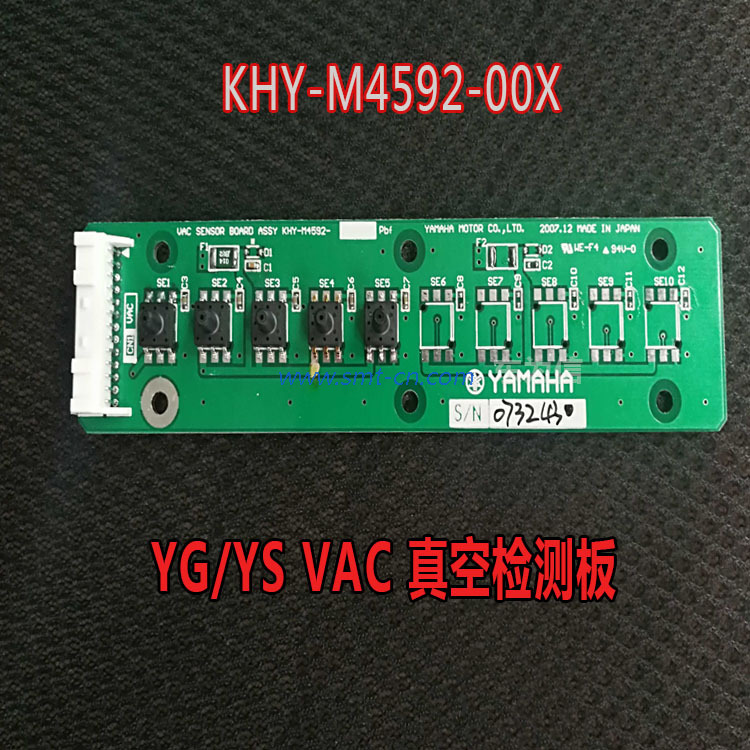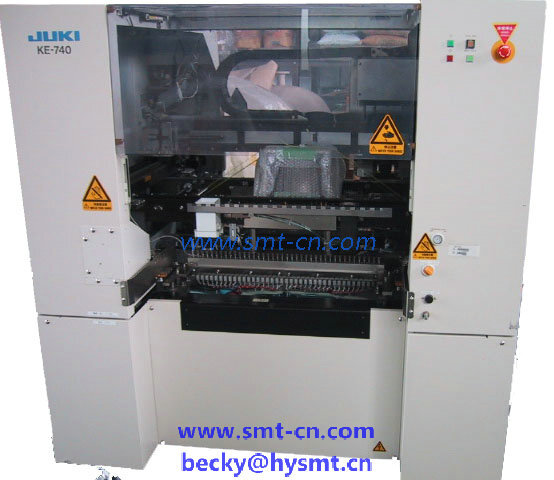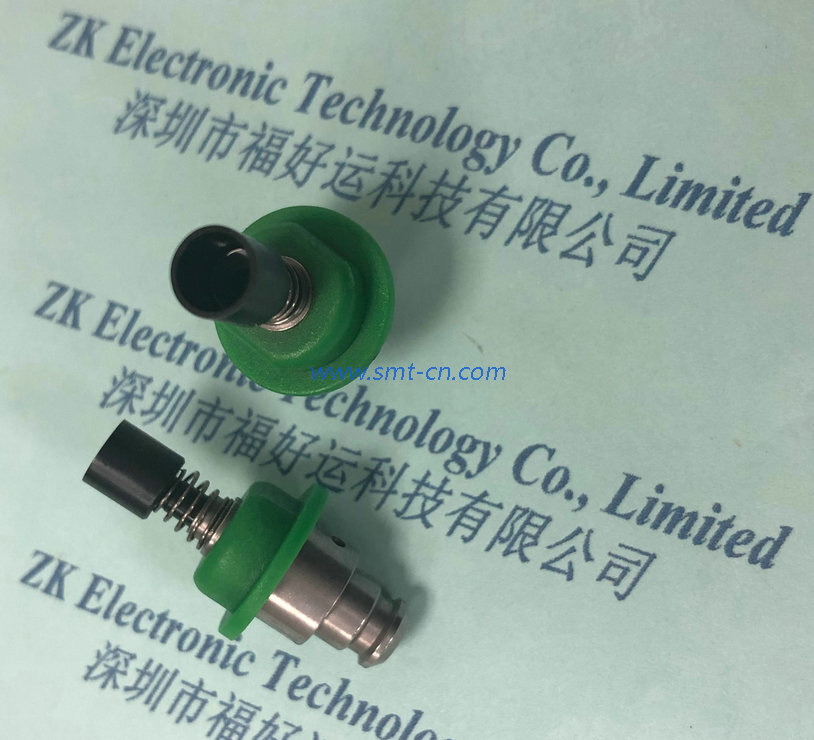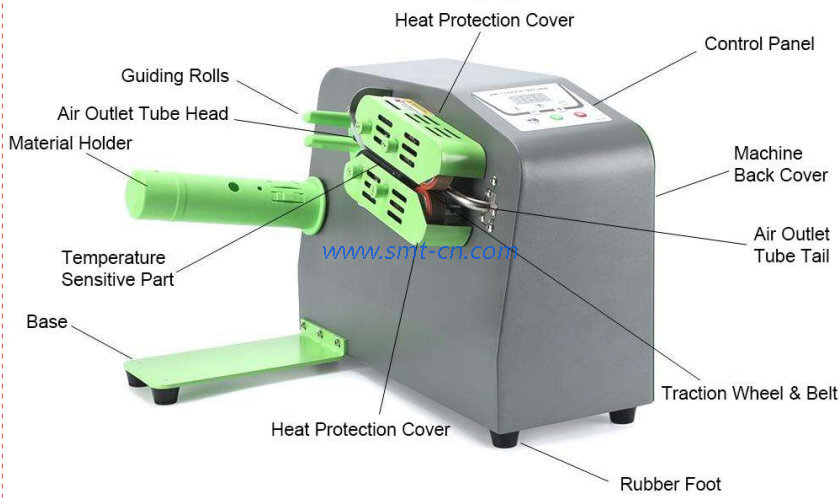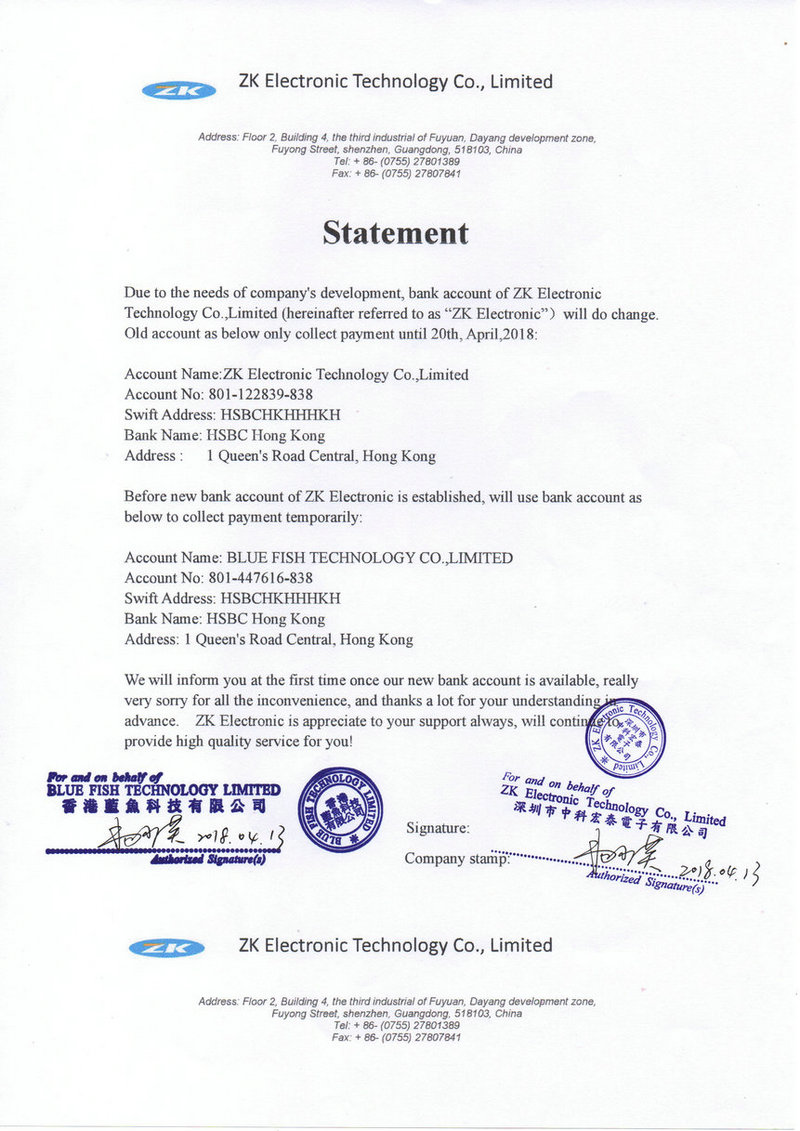NEWS
The three main elements that determine the quality of SMT screen printing
- Categories:Industry News
- Author:Becky Su
- Origin:
- Time of issue:2024-01-30 16:24
- Views:
(Summary description)The three main elements that determine the quality of SMT screen printing In SMT, a typical PCB (Printed Circuit Board) may have several hundred components and 600 to 1,000 coupling points (i.e. pad pads) on it. The solder failure rate at these endpoints must therefore be kept to a minimum. In general, 60% of PCBs that fail testing and have to be reworked are due to poor solderpaste silkscreen quality. Below, we will discuss the fundamentals of screenprinting and explore the techniques required to consistently ** screenprint quality in production. There are three key elements in solder paste screen printing, here called the three S's: Solderpaste, Stencils, and Squeegees. The right combination of these three elements is the key to consistent screen quality. Elements that determine the quality of SMT screen printing I: Solder Paste (the first S) Solder paste is a combination of solder beads and rosin, the function of which is to remove oxides from component pins, pads and beads during the first stage of reflowing in the soldering oven, which lasts about three minutes at 150°C. (Resin is sometimes called rosin. (Resin is sometimes called rosin, and technically, resin is a natural product while rosin is man-made.) Solder is an alloy of lead, tin and silver that is reflowed in the reflow oven** at about 220°C. The silver and rosin both play a role in helping to melt the solder. Both silver and rosin play a role in helping to melt the solder and wetting to achieve reflow, i.e. the role of the flux. (Wetting: is a descriptive term for the effect of soldering, where the object being soldered appears to be "wetted" by the tin.) Spherical solder particles are manufactured into a variety of mixed sizes, and then screened and graded. Solder paste is graded according to the size of the beads, as follows: Type 2: 75-53mm Type 3: 53-38mm Type 4: 38-25mm (m=micron=0.001mm) The Law of Three Balls The Law of Three Balls gives production a simple formula for selecting a silkscreen stencil; the size of the solder bead in the solder paste must match the silkscreen stencil, as described below: Empirical formula: At least three *large diameter tin beads can be lined up vertically in the thickness direction of the screen printing stencil. At least three *large diameter beads can be aligned horizontally across the width of the *small holes in the screen printing template. The calculation is slightly more complicated because the beads are measured in metric microns (m), while the industry standard for the thickness of screen printing templates is the US-specific unit thou! (1mm=1x10-3mm,1thou=1x10-3inches,25mm?1thou.) Solder Paste Type 3x*Large Bead Size *Close Stencil Thickness Type 2: 75-53m 3x75m=225m=9.0thou 9 thou Type 3: 53-38m 3x53m=159m=6.4 thou 6 thou Type 4: 38-25m 3x38m=114m=4.6 thou 4 thou The size of the silk-screened hole is determined by the component pin spacing (pitch), and the size of the pad is generally half the pin spacing. (The size of the silkscreen hole may actually be a little smaller than the size of the pad.) For example, for a 25 thou (0.63mm) spacing, the silkscreen hole is 12.5 thou. Therefore, the solder paste must be selected to meet the *smallest* silkscreen hole on the silkscreen stencil: Component *Small pin spacing *Small silkscreen hole Suitable solder paste type 16 thou 8 thou Type 2: 75-53m 12 thou 6 thou Type 3: 53-38m 8 thou 4 thou Type 4: 38-25m Therefore, the thickness of the silkscreen stencil is usually the deciding factor, and for most applications the standard 6 thou thick silkscreen stencil with type 3 solder paste is selected. Viscosity Viscosity is an important characteristic of solder paste, from the dynamic aspect, in the screen printing stroke, the lower its viscosity, the better the mobility, easy to flow into the screen printing holes, printed on the PCB pads. From the static side of the consideration, silk screen after scraping, solder paste stays in the silk screen hole, its viscosity is high, it maintains the shape of its filling, and will not collapse downward, which is more important for waiting for the patch before the silk screen in the pads of the solder paste. The viscosity of the paste in its container tank is measured using a delicate and often expensive laboratory viscometer. Standard viscosities are in the range of about 500kcps-1200kcps, with a more typical 800kcps being ideal for stencil screen printing. A more practical and economical method of determining whether a solder paste has the correct viscosity is as follows: Stir the paste with a spatula inside the container jar for about 30 seconds, then pick up some paste, three or four inches above the container jar, and let the paste drip down on its own; it should slide down like thick syrup at first, then break off in sections to fall into the container jar. If the paste can not slide down, it is too thick, if it has been falling with
The three main elements that determine the quality of SMT screen printing
(Summary description)The three main elements that determine the quality of SMT screen printing
In SMT, a typical PCB (Printed Circuit Board) may have several hundred components and 600 to 1,000 coupling points (i.e. pad pads) on it. The solder failure rate at these endpoints must therefore be kept to a minimum. In general, 60% of PCBs that fail testing and have to be reworked are due to poor solderpaste silkscreen quality.
Below, we will discuss the fundamentals of screenprinting and explore the techniques required to consistently ** screenprint quality in production.
There are three key elements in solder paste screen printing, here called the three S's: Solderpaste, Stencils, and Squeegees. The right combination of these three elements is the key to consistent screen quality.
Elements that determine the quality of SMT screen printing I: Solder Paste (the first S)
Solder paste is a combination of solder beads and rosin, the function of which is to remove oxides from component pins, pads and beads during the first stage of reflowing in the soldering oven, which lasts about three minutes at 150°C. (Resin is sometimes called rosin. (Resin is sometimes called rosin, and technically, resin is a natural product while rosin is man-made.) Solder is an alloy of lead, tin and silver that is reflowed in the reflow oven** at about 220°C. The silver and rosin both play a role in helping to melt the solder. Both silver and rosin play a role in helping to melt the solder and wetting to achieve reflow, i.e. the role of the flux. (Wetting: is a descriptive term for the effect of soldering, where the object being soldered appears to be "wetted" by the tin.)
Spherical solder particles are manufactured into a variety of mixed sizes, and then screened and graded. Solder paste is graded according to the size of the beads, as follows:
Type 2: 75-53mm
Type 3: 53-38mm
Type 4: 38-25mm (m=micron=0.001mm)
The Law of Three Balls
The Law of Three Balls gives production a simple formula for selecting a silkscreen stencil; the size of the solder bead in the solder paste must match the silkscreen stencil, as described below:
Empirical formula:
At least three *large diameter tin beads can be lined up vertically in the thickness direction of the screen printing stencil.
At least three *large diameter beads can be aligned horizontally across the width of the *small holes in the screen printing template.
The calculation is slightly more complicated because the beads are measured in metric microns (m), while the industry standard for the thickness of screen printing templates is the US-specific unit thou!
(1mm=1x10-3mm,1thou=1x10-3inches,25mm?1thou.)
Solder Paste Type 3x*Large Bead Size *Close Stencil Thickness
Type 2: 75-53m 3x75m=225m=9.0thou 9 thou
Type 3: 53-38m 3x53m=159m=6.4 thou 6 thou
Type 4: 38-25m 3x38m=114m=4.6 thou 4 thou
The size of the silk-screened hole is determined by the component pin spacing (pitch), and the size of the pad is generally half the pin spacing. (The size of the silkscreen hole may actually be a little smaller than the size of the pad.) For example, for a 25 thou (0.63mm) spacing, the silkscreen hole is 12.5 thou. Therefore, the solder paste must be selected to meet the *smallest* silkscreen hole on the silkscreen stencil:
Component *Small pin spacing *Small silkscreen hole Suitable solder paste type
16 thou 8 thou Type 2: 75-53m
12 thou 6 thou Type 3: 53-38m
8 thou 4 thou Type 4: 38-25m
Therefore, the thickness of the silkscreen stencil is usually the deciding factor, and for most applications the standard 6 thou thick silkscreen stencil with type 3 solder paste is selected.
Viscosity
Viscosity is an important characteristic of solder paste, from the dynamic aspect, in the screen printing stroke, the lower its viscosity, the better the mobility, easy to flow into the screen printing holes, printed on the PCB pads. From the static side of the consideration, silk screen after scraping, solder paste stays in the silk screen hole, its viscosity is high, it maintains the shape of its filling, and will not collapse downward, which is more important for waiting for the patch before the silk screen in the pads of the solder paste.
The viscosity of the paste in its container tank is measured using a delicate and often expensive laboratory viscometer. Standard viscosities are in the range of about 500kcps-1200kcps, with a more typical 800kcps being ideal for stencil screen printing. A more practical and economical method of determining whether a solder paste has the correct viscosity is as follows:
Stir the paste with a spatula inside the container jar for about 30 seconds, then pick up some paste, three or four inches above the container jar, and let the paste drip down on its own; it should slide down like thick syrup at first, then break off in sections to fall into the container jar. If the paste can not slide down, it is too thick, if it has been falling with
- Categories:Industry News
- Author:Becky Su
- Origin:
- Time of issue:2024-01-30 16:24
- Views:
The three main elements that determine the quality of SMT screen printing
In SMT, a typical PCB (Printed Circuit Board) may have several hundred components and 600 to 1,000 coupling points (i.e. pad pads) on it. The solder failure rate at these endpoints must therefore be kept to a minimum. In general, 60% of PCBs that fail testing and have to be reworked are due to poor solderpaste silkscreen quality.
Below, we will discuss the fundamentals of screenprinting and explore the techniques required to consistently ** screenprint quality in production.
There are three key elements in solder paste screen printing, here called the three S's: Solderpaste, Stencils, and Squeegees. The right combination of these three elements is the key to consistent screen quality.
Elements that determine the quality of SMT screen printing I: Solder Paste (the first S)
Solder paste is a combination of solder beads and rosin, the function of which is to remove oxides from component pins, pads and beads during the first stage of reflowing in the soldering oven, which lasts about three minutes at 150°C. (Resin is sometimes called rosin. (Resin is sometimes called rosin, and technically, resin is a natural product while rosin is man-made.) Solder is an alloy of lead, tin and silver that is reflowed in the reflow oven** at about 220°C. The silver and rosin both play a role in helping to melt the solder. Both silver and rosin play a role in helping to melt the solder and wetting to achieve reflow, i.e. the role of the flux. (Wetting: is a descriptive term for the effect of soldering, where the object being soldered appears to be "wetted" by the tin.)
Spherical solder particles are manufactured into a variety of mixed sizes, and then screened and graded. Solder paste is graded according to the size of the beads, as follows:
Type 2: 75-53mm
Type 3: 53-38mm
Type 4: 38-25mm (m=micron=0.001mm)
The Law of Three Balls
The Law of Three Balls gives production a simple formula for selecting a silkscreen stencil; the size of the solder bead in the solder paste must match the silkscreen stencil, as described below:
Empirical formula:
At least three *large diameter tin beads can be lined up vertically in the thickness direction of the screen printing stencil.
At least three *large diameter beads can be aligned horizontally across the width of the *small holes in the screen printing template.
The calculation is slightly more complicated because the beads are measured in metric microns (m), while the industry standard for the thickness of screen printing templates is the US-specific unit thou!
(1mm=1x10-3mm,1thou=1x10-3inches,25mm?1thou.)
Solder Paste Type 3x*Large Bead Size *Close Stencil Thickness
Type 2: 75-53m 3x75m=225m=9.0thou 9 thou
Type 3: 53-38m 3x53m=159m=6.4 thou 6 thou
Type 4: 38-25m 3x38m=114m=4.6 thou 4 thou
The size of the silk-screened hole is determined by the component pin spacing (pitch), and the size of the pad is generally half the pin spacing. (The size of the silkscreen hole may actually be a little smaller than the size of the pad.) For example, for a 25 thou (0.63mm) spacing, the silkscreen hole is 12.5 thou. Therefore, the solder paste must be selected to meet the *smallest* silkscreen hole on the silkscreen stencil:
Component *Small pin spacing *Small silkscreen hole Suitable solder paste type
16 thou 8 thou Type 2: 75-53m
12 thou 6 thou Type 3: 53-38m
8 thou 4 thou Type 4: 38-25m
Therefore, the thickness of the silkscreen stencil is usually the deciding factor, and for most applications the standard 6 thou thick silkscreen stencil with type 3 solder paste is selected.
Viscosity
Viscosity is an important characteristic of solder paste, from the dynamic aspect, in the screen printing stroke, the lower its viscosity, the better the mobility, easy to flow into the screen printing holes, printed on the PCB pads. From the static side of the consideration, silk screen after scraping, solder paste stays in the silk screen hole, its viscosity is high, it maintains the shape of its filling, and will not collapse downward, which is more important for waiting for the patch before the silk screen in the pads of the solder paste.
The viscosity of the paste in its container tank is measured using a delicate and often expensive laboratory viscometer. Standard viscosities are in the range of about 500kcps-1200kcps, with a more typical 800kcps being ideal for stencil screen printing. A more practical and economical method of determining whether a solder paste has the correct viscosity is as follows:
Stir the paste with a spatula inside the container jar for about 30 seconds, then pick up some paste, three or four inches above the container jar, and let the paste drip down on its own; it should slide down like thick syrup at first, then break off in sections to fall into the container jar. If the paste can not slide down, it is too thick, if it has been falling without breaking, it is too thin, viscosity is too low.
Elements that determine the quality of SMT screen printing II: Screen printing stencil (second S)
A thick latex screen is used, which is distinct from the screen printing stencil and is now only used by a few solder paste screen printing machines. Metal stencils are much more common and superior than latex screens and are not too expensive.
Thick Latex Screens
Solder paste printing technology originated from the well-established industrial silk screenprinting industry, hence the term "silk screen" is used for this type of solder paste printing which requires a thicker deposit. Thick latex screens were originally much more economical than metal stencils, but they did not last as long and were not practical for finepitch.
The manufacturing process is as follows:
A wire mesh of nylon, polyester fiber or stainless steel is spread over the frame. Stainless steel wire is *better* because of its rigidity. The mesh used for industrial screen printing is very fine, about 400 filaments per inch, so that fine ink particles (2-3 μm) can pass through the mesh very smoothly. In order to get the tin beads to pass through the screen, a much rougher screen, about 80 filaments per inch, is recommended. The screen is covered with photosensitive latex, usually about ten layers to seal the mesh, creating a layer typically 8 thou thick. Positively photopolymerizing (black pads) clear glass is placed on top and exposed to very strong UV light (e.g., 2kw for a few seconds). The exposed area hardens, the soft areas are not exposed and can be washed away leaving the mesh behind. Therefore, the solder paste can be printed through these holes when screen printing.
The screen printing squeegee (squeegee) utilizes the principle of pump action to squeeze the solder paste through the screen, so a soft rubber squeegee is used (see squeegee section). Screen printing screen and PCB between the gap of 1-3mm, squeegee will screen low and PCB contact, and then "tear". This action is necessary because otherwise the paste would remain on the screen and not on the pads of the PCB.
The limitation of the application of thick latex screens is mainly due to the obstruction of the screen on the aperture, which results in a limited screen print deposit and cannot be used for close spacing of less than 30 thou.
Metal Stencils
Metal stencils are now used in most solder paste screen printing machines. Its composition is a thin metal plate with small holes, from which the paste is printed, solving the problem of irregularity of the precipitates of the previous screen printing. The screen printing squeegee is not required to have a pump action, because the solder paste can easily flow through the open holes. There is also no requirement for a gap between the stencil and the PCB.
There are three methods of manufacturing metal stencils: chemical, laser and galvanic etching.
Chemical etching
Off-the-shelf silkscreen stencils are mainly manufactured by this method, and the process is as follows:
Take a thin copper plate, or more commonly known as stainless steel plate, coated on both sides of the photosensitive acid-resistant material, positive photopolymerization (black pads) stencils were stacked on both sides, with a strong UV light exposure. The exposed areas harden, while the soft pad areas can be rinsed away. The plate is then placed in an acid bath to etch away the desired holes from both sides.
Interpositioning of the positive photopolymerization stencils on both sides of the metal plate is critical, especially for closely spaced components. If the stencils are not positioned well, the holes will form slopes and result in poor screen printing. The chances of this happening are usually one in ten, but in the last few years the problem has been largely solved, as improved CAD data and manufacturing techniques have reduced the failure rate to about one in fifty. Successful techniques will allow the stencil to be used as an envelope into which an empty plate can be placed to achieve an accuracy of 2-20 microns.
The walls of the holes cannot be made too flat because the acid is gradually eroding into the holes, but it is also eroding laterally into the plate. Form a "8" cross-section.
However, this is usually not a problem since the screen printing templates are very thin.
Laser engraved stencils
Another technique is to use a computer-controlled CO2 or YAG laser to cut the holes from one side of the board. It can take about half an hour to etch a stencil, and the larger the open area, the more time and the more expensive it is. The approximate cost of the laser machine is $400,000, so laser usage time is expensive, with the result that a stencil typically costs three times as much as chemical etching.
The system is very sophisticated, but in addition to being expensive, it has a disadvantage: the laser cuts fillet holes out of the molten metal, but it also tends to melt the surface of the stencil, resulting in a rough surface. It is therefore necessary to sand polish or chemically clean the surface, leaving a roughness of a few microns, which looks as if the surface is dull, is abrasive to the polyester squeegee and makes the stencil difficult to clean, although it has been argued that the roughness will help with the "rolling" of the solder paste.
Electro-etched formwork
Electro-etched stencils, which now account for about 2-3% of all stencils in use, are manufactured additively, unlike other processes where the stencil is formed as follows:
The core board (substrate) is buried and covered with a photosensitive insulating latex, and exposed to UV light through a negatively photopolymerizing stencil (the pad area is transparent and the non-silkscreen area is opaque). The pad area is hardened and the other areas are cleaned off, then the core plate is bathed in an acidic electrolytic solution, coupled to the power supply as a cathode, with depleting nickel as the anode. After a few hours, the nickel precipitates in the conductive areas (non-pads) and can be torn off like a piece of paper to form fillet holes.
This stencil has a superiority over other stencils in that the inside walls of the holes are smooth and can be made into a trapezoidal shape, i.e., the bottom is slightly wider than the top, at an angle of 1-2 °, which helps the solder paste pass through the stencil and be printed onto the PCB. At the bottom of the hole around the formation of 10-20micron "tip", in the pads around the formation of a circle of the border, silkscreen to help paste accurately stay in the pads, the cost is about 30% higher than the chemical etching.
Determine the quality of SMT screen printing elements of the third: squeegee (the third S)
Squeegees come in two forms: diamond-shaped and drag skirt-shaped, drag skirt-shaped into polyethylene (or similar) materials and metal.
Diamond-shaped
This form is now quite uncommon, although it is still in use, especially in the United States and Japan. It consists of a square with a cross-section of about 10mmx10mm, held by a clamping plate, forming an angle of 45° on both sides: this type of squeegee can work in both directions, skipping over the solder paste strip at the end of each stroke, and therefore only needs one squeegee. However, this makes it easy to get dirty, as the solder paste runs upwards instead of staying on the very little exposed part of the polyethylene. Its lack of flexibility means it can't fit twisted and distorted PCBs, which can result in missed print areas. Not adjustable.
Tow skirt form
This form is very common and consists of polyethylene with a rectangular cross-section, supported by a clamping plate, and requires two squeegees, one in the direction of each screen printing stroke. There is no need to skip the solder paste strip as the paste is between the two squeegees and the angle of each stroke can be determined individually.
About 40mm of squeegee is exposed and the paste only travels up 15-20mm, so this form is cleaner.
The squeegees are differentiated by hardness range and color code, for example:
60-65shore very soft red
70-75shore soft green
80-85 shore hard blue
90 + shore very hard White
Before use, the squeegee must be adjusted so that its guiding edges are straight and parallel, first check whether the edges are straight, if not, adjust the fixing screws of the clamping plate.
Squeegee function
The dynamics of the squeegee requirements are different for latex screens when compared to metal stencils.
On latex screens, the squeegee needs to push the solder paste in front of it, pumping the paste through the screen and onto the screened area, and to achieve this it needs to use a soft squeegee (70-75shore, green) that deforms itself where it comes into contact with the screen.
Even softer squeegees (60-65shore, red) can be used to screen inks on thick mixed ceramic substrates.
When using a metal stencil, the squeegee rolls the paste in front of it to flow into the holes without pumping, then scrapes off the excess paste, leaving a paste as thick as the stencil on the PCB pads. Deformation of the squeegee is not required or expected, so a harder (i.e., 80-85shore, blue) or metal squeegee can be used.
Squeegee hardness and pressure must be coordinated, if the pressure is too low, the squeegee will not scrape the paste clean from the stencil, if the pressure is too high, or the squeegee is too soft, then the squeegee will sink into the larger holes in the stencil to scoop out the paste.
Empirical formula for pressure
Using a blue squeegee on a metal stencil, to get the correct pressure start by applying 1kg of pressure for every 50mm of squeegee length, e.g. 6kg for a 300mm squeegee, gradually reduce the pressure until the paste starts to stay on the stencil and does not scrape clean, then increase the pressure by 1kg. There should be an acceptable range of 1-2kg between the time the paste starts to scrape unclean and the time the squeegee sinks into the hole and digs out the paste to achieve good screen printing results.
Metal Squeegee
Polyethylene squeegees can be used to very good effect under good control, and metal squeegees are also good in production and can solve some of the problems associated with polyethylene.
Remember, however, that it is not suitable for latex screens as it causes excessive wear and does not have the effect of pumping solder paste.
It consists of a metal blade fixed to a holder with about 40mm sticking out. Unlike polyethylene blades, it has very straight edges and does not require adjustment before use. The life of the blade is unlimited compared to the approximate 3-9 month life of polyethylene.
Although the whole blade has a short period of flexibility to accept deformed warped PCBs, the fact that the sides do not give way and the deformation sinks into the fillet gives it several advantages, regardless of the size of the fillet, and a wide range of pressures (i.e., 4-15 kg) gives good results. 6 thou stencils dictate that the thickness of the fillet be 6 thou, which avoids variations depending on the operator and other conditions. This avoids variations depending on the operator and other conditions. Reliable screen thicknesses are particularly important because the allowable tolerance for co-planarity of surface mounted components is 4 thou, so the screen thickness must be at least 5 thou.
Because metal stencils and squeegees produce a very full solder paste, some users find that when they convert, they get a screen thickness that is too thick. This can be corrected by reducing the thickness of the stencil, but it is *preferable* to reduce ("fine-tune") the length and width of the silkscreen holes by 10% to reduce the area of solder paste on the pads. This means that the positioning of the pads becomes less important and the frame seal between stencil and pad is improved, reducing paste "blowing" between the stencil bottom and the PCB. The number of times the bottom of the stencil is cleaned is reduced from every 5 or 10 screenings to every 50 screenings.
Separation of the stencil from the PCB after screen printing
After silkscreen, the PCB is separated from the silkscreen stencil, leaving solder paste on the PCB rather than in the silkscreen holes.
For *fine* silk-screened holes, the thickness of the stencil is important because the walls of the silk holes become important relative to the pad area, and the solder paste may adhere more readily to the walls of the holes than to the pads.
Pad area = wxd fillet hole wall area = 2 (wxh) + 2 (dxh)
Empirical formula for solder pad area, which is not less than the area of the inner wall of the hole if possible. Example:
The *dense* pin spacing on a PCB is 25thou, so the *smallest* pad width is 12.5thou or 3mm, multiplied by, say, a 2mm length, and the template is 6thou (0.15mm) thick.
Pad area = 0.3mmx2mm = 0.6mm2
Area inside the fillet hole = 2x (0.15mmx0.3mm) + 2x (0.15mmx2mm) = 0.69mm2
The situation can be improved by reducing the thickness of the template to 4 thou (0.1mm).
Fillet hole inner wall area = 2x (0.10mmx0.3mm) + 2x (0.1mmx2mm) = 0.46mm2
However, two factors are favorable, **, the pads are a continuous area and the inner wall of the fillet hole is divided into four sides in most cases, which helps to release the solder paste, and **, gravity, along with the adhesion to the pads, pulls the paste out of the fillet hole adhering it to the PCB in the 2-6 seconds it takes to silkscreen and separate it. To *greatly* take advantage of this favorable effect, the separation can be delayed, starting with a slower PCB separation. Many machines allow for a delay after silkscreen, with an adjustable slower speed for the first 2-3mm of table drop travel.
Screen Printing Speed
The speed at which the squeegee travels over the silkscreen stencil during screen printing is important because the solder paste needs time to roll and flow into the silkscreen holes. If insufficient time is allowed, then the paste will not be flat on the pad in the direction of travel of the squeegee. At speeds as low as 20mm per second, the squeegee may scrape through small silk holes in less than a few tens of milliseconds.
Empirical formula for silkscreen speed
For each thou length of *dense* component pins on a PCB, you can allow a *maximum* speed of 1mm per second. Thus:
*dense pin spacing *small silk vias *large silkscreen speed
50thou 25thou 50mm per second
25thou 12.5thou 25mm per second
16thou 8thou 16mm per second
Conclusion
Regardless of the complexity and characteristics of the screen printing machine you employ, if you fail to choose the right combination of solder paste, screen stencil and screen squeegee to use, then screen printing is just art, not science.
Related News
CONTACT US
Hotline:(0086)755-27801389
Mobile: (0086)15323874439
Sale No.1: becky@hysmt.cn
Sale No.2: fhysmt@hysmt.cn
Sale No.3: zksale@hysmt.cn
Sale No.4: sale@hysmt.cn
Sale No.5: elsey@hysmt.cn
GIVE ME A MESSAGE
Copyright: ZK Electronic Technology Co., Ltd 粤ICP备11054297号 Powered by www.300.cn


